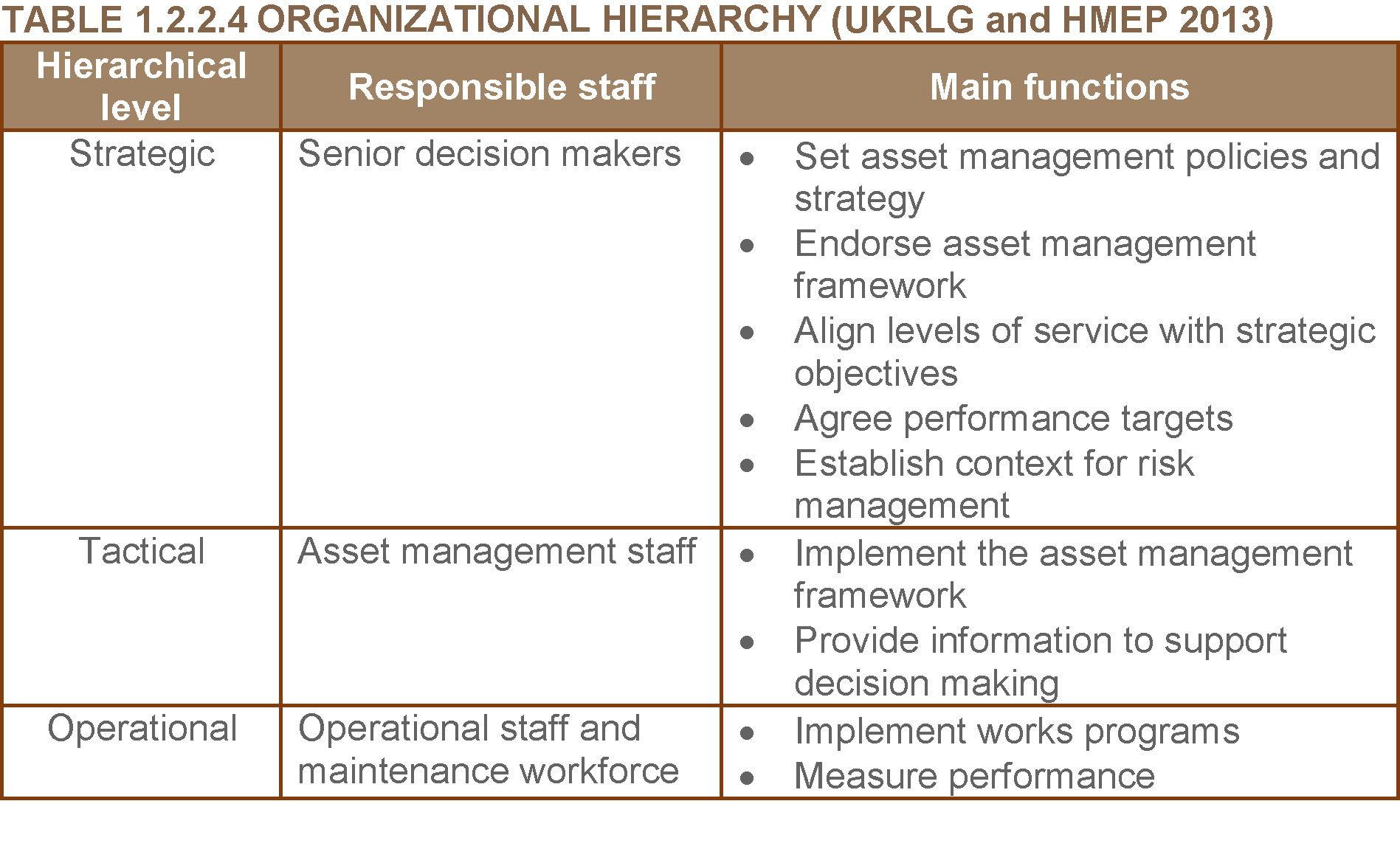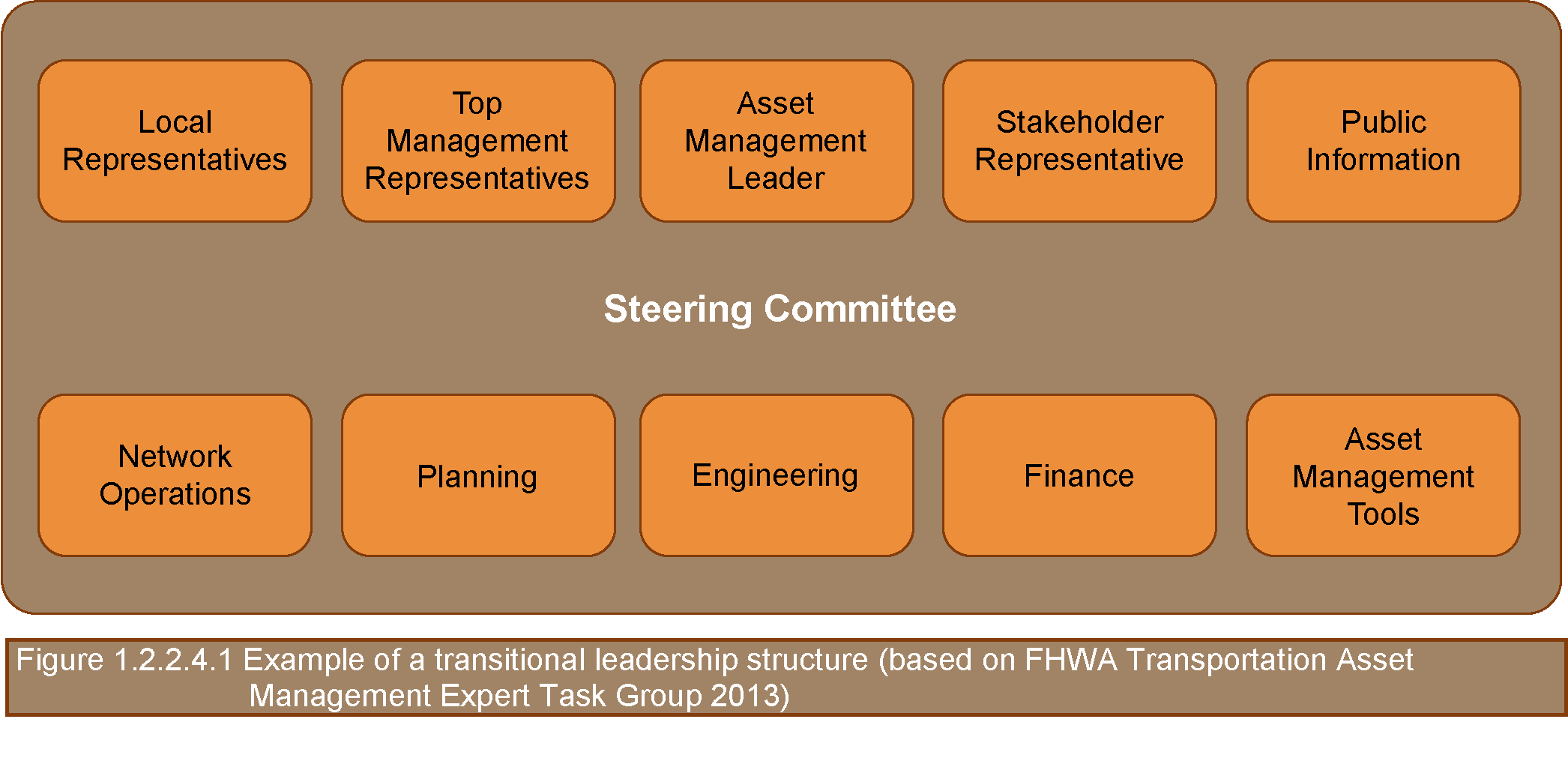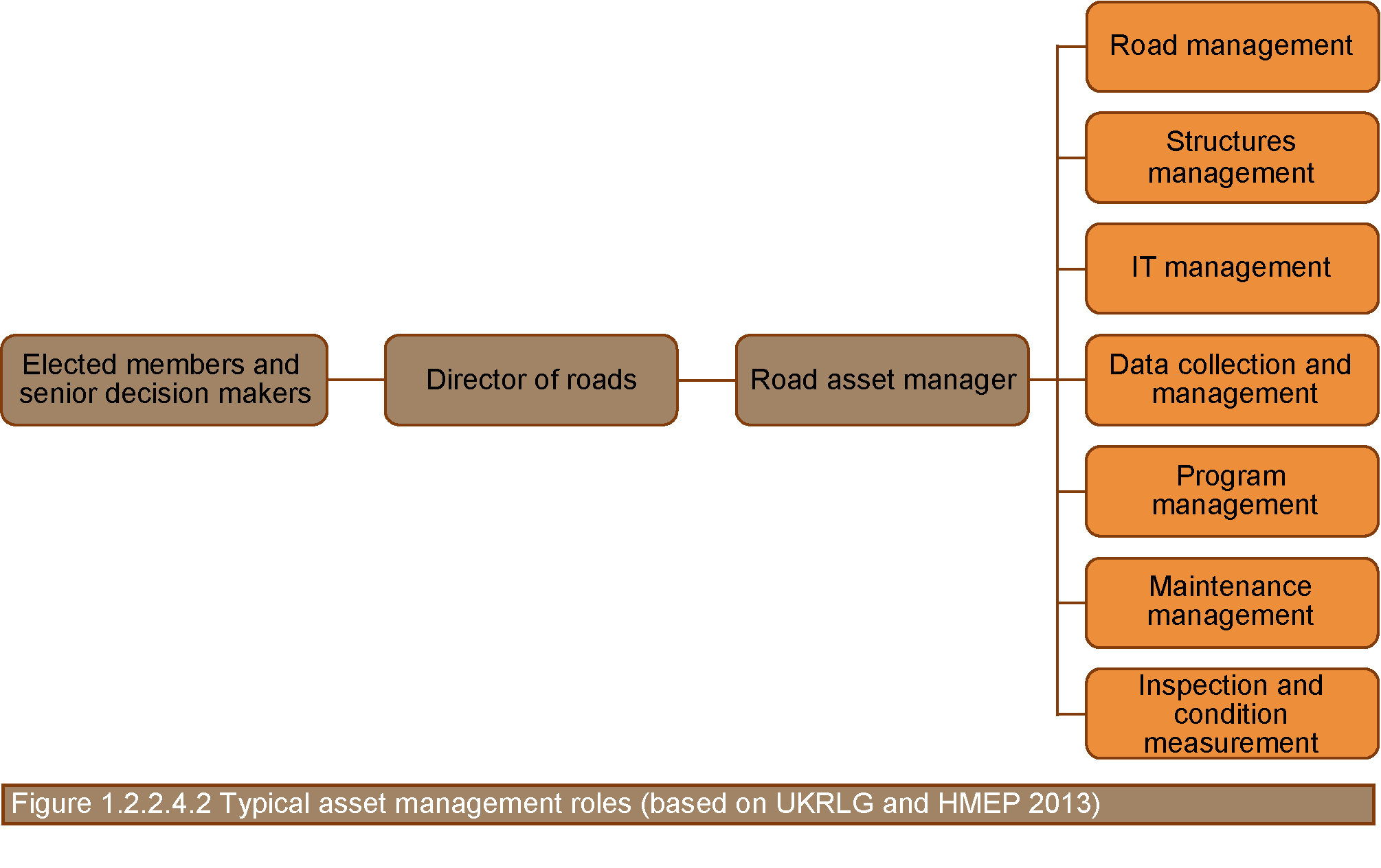
Asset Management Manual
A guide for practitioners!

Asset Management Manual
A guide for practitioners!
In designing the most suitable organizational structure to support asset management, road organizations may choose either a centralized or a decentralized approach. While the former facilitates consistency of processes and work methods, it also entails the risk of making asset management appear remote for the areas responsible of service delivery, which may not fully understand the policies defined centrally. On the other hand, in some circumstances a decentralized structure may result in a fragmented asset management approach and culture.
Regardless of the organization type chosen, the roles and relationships driving asset management should clearly establish the strategic, tactical, and operational levels within an organization, as shown in Table 1.2.2.4 (UKRLG and HMEP 2013).

The asset management functions included in Error: Reference source not found are discussed throughout this manual.
Key roles for developing and delivering asset management include the following (UKRLG and HMEP 2013):
The actual positions and relationships among these roles that should be defined within each organization largely depend on the results of the self-assessment exercise.
At the basic maturity level, asset management may rely on just one person or a small group with multi-disciplinary training and experience. As the organization moves to the proficient level, asset management will involve the coordinated effort of various workgroups and multiple individuals.
Defining new roles and managing the transition from a small group to a formal, mature asset management team is an important leadership task (FHWA Transportation Asset Management Expert Task Group & AASHTO 2013). It requires a consideration of individual, team, and organizational expectations as well as a vision for how the process will change as the formal asset management team is established and developed. Figure 1.2.2.4.1 shows an example of how a transitional asset management team might be composed.

As with any major project in a road organization, the re-engineering of the corporate structure needs a project manager or project leader, who will be devoting most of his/her time to the project. A feasible candidate to play this role might be the chief executive officer of the organization or a properly empowered senior manager. The most important skill of the project manager would probably be his/her ability to build teams. The attribute list for this person should also include motivation and persistence in overcoming the inevitable barriers that appear whenever an organizational change is attempted. The project manager may come from an engineering, economics, or planning background or, preferably, from a combination of more than one of these disciplines.
A steering committee of senior managers, overseeing the work of the asset management leader, is also essential to ensure that all parts of the asset management process function together as a unit. Sufficient resources are vital to the effective implementation of asset management, including adequate training for agency staff to ensure availability of the necessary skills and understanding to implement asset management successfully.
Clear role descriptions for those carrying out asset management tasks and requirements should then be developed. There is likely to be new competency requirements within the organization and training programs in asset management to support the proposed changes.
As stated earlier, there is no single way of defining roles for asset management. However, an organizational structure suitable to delivering asset management typically includes the roles depicted in Figure 1.2.2.4.2 (UKRLG and HMEP 2013).
